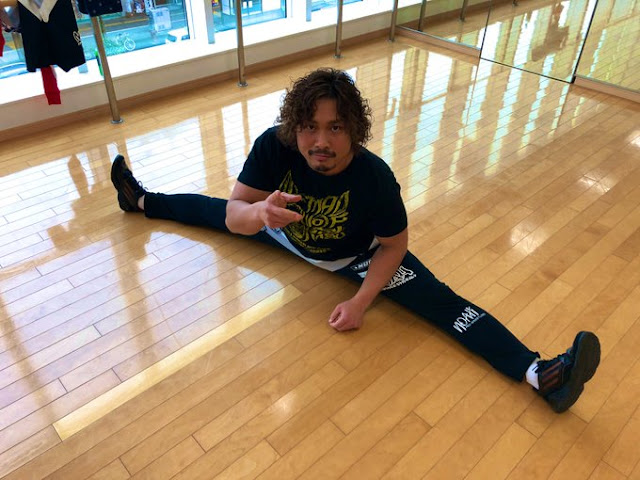ESSAY STREET: I know the moves, but I don't know the names of the wrestlers, the children of the Famicon Generation.
20th April 1993 (Issue No 547)
As the saying goes, "Pro-wrestling exists because of the fans," pro wrestlers and pro-wrestling promotions would be finished if their fans abandoned them. To put it another way, it is the pro-wrestling fans that support the world of pro-wrestling. When video artist Mikio Yamazaki learned about the reality of elementary school children who will be the future leaders of the mat world, he had shivers down his spine. He saw the shadow of Famicom games...
Screwdriver is a driver...
My title is "Filmmaker".
A filmmaker is like an artist, so unlike a film director, you can't really make a living from it. So, for the past few years, I've been working off and on as a instructor at an after-school club. The job involves watching over the children as they play energetically, teaching them how to play with balls and soccer balls, and how to play with tops and kendama*, while also making sure they do not get seriously injured. Using books like "Yoshiaki Fujiwara's Super Techniques", which was published by Kodansha a few years ago, as a reference, they competed in submission techniques. One day, I was sitting in the sandbox in the schoolyard, surrounded by boys, giving a lecture on professional wrestling techniques.
"This is the Drill-a-Hole Piledriver*, and there's also the Tombstone Piledriver..." I was doing what I usually do, when a first grade boy asked me, "What about the Screw Piledriver?"
"Huh? I wonder if there is such a move? Which wrestler uses it?"
The boy immediately replied, "It's Zangief".
It took me a long time to understand what all of this was about. I had images of the Red Bull Gang* and the Russian wrestlers that Fujiwara had invited flashed through my mind, until the boys finally explained it to me. That's when I learned that Zangief is a character from last year's hit video game, Street Fighter II. Even though he was a first grader, he didn't seem to think that a wrestler named Zangief did actually exist, but he did think that many of the techniques that appeared in the game such as the "Spinning Bird Kick" and the "Hundred Hand Slap", "could really exist". Because of this, I decided to ask the children, who were playing at the after school clubs and in the school-yard, how many wrestlers they knew by name. The result, which was somewhat expected, was that, with a few exceptions, the overwhelming majority of professional wrestlers that children today know are Baba and Inoki.
It has been ten years since the FAMICOM was released, and during that time wrestling broadcasts have slipped away from prime time, and the fact that only Baba and Inoki are known, means that time has stopped there. All Japan is broadcast late at night, and New Japan's 4pm Saturday afternoon is prime time for kids to go to cram school. There is no doubt that a generation is growing up that only knows about pro wrestling through video games. And then a strange reversal occurs. I think that many of you have already seen the articles, but this year, New Japan, All Japan and FMW will release wrestling games. As a wrestling fan, I am certainly very happy to be able to control Baba-san myself, even if it is just in a game. However, this is a double-edged sword. I don't think that having real wrestlers appear in the game under their real names will broaden the base of pro wrestling fans. But, won't this just amplify the generation that only knows wrestling in a world where they can control it themselves? Won't this just amplify the generation that only knows wrestling in a world where they can control it themselves? I can't help but feel that this produces a large number of spectators who, rather than getting what the wrestler is expressing and digesting it with their own senses, will selfishly and poorly heckle wrestlers who don't move the way they want them to.
I borrowed "Street Fighter II" from one of my kids, and we played it for a bit. It is undeniably a well-made fighting game, but it is just a game after all. The programmed characters simply fight within the programmed range. There is no spit flying at you, they don't go off screen and engage in outside brwals, and most importantly, there is no pain. The characters in the game don't break bones and end up in the hospital, and they don't learn their opponents moves. But, no matter how realistic the techniques and the movements of the wrestlers you use, the appeal of a fighting game is probably completely different from the appeal of real professional wrestling that is performed by real people. What unfolds in the wrestling ring is not just violence. It contains the human stories of joy and sorrow, betrayal, jealousy, friendship and desire in all its various forms, lip biting frustration, giving in and kowtowing, and everything else that humans do.
I know that writing all this is preaching to the choir for the readers of this magazine, but it got me thinking again about the appeal of pro wrestling and its future.
Picture credit: Weekly Pro
Notes
Kendama: A traditional Japanese toy
Drill-a-Hole piledriver: Tarzan Goto move
Red Bull Gang: See Salman Hashimikov



Comments
Post a Comment
Spam will be deleted immediately